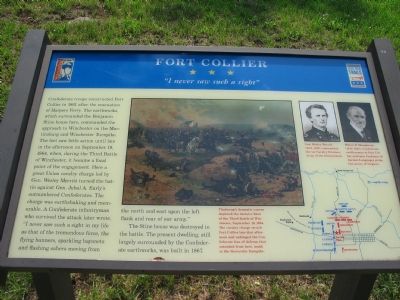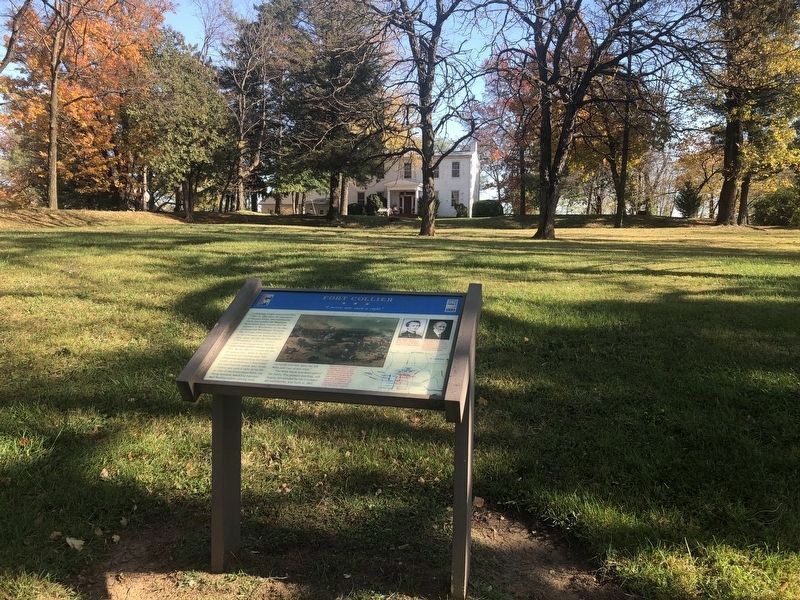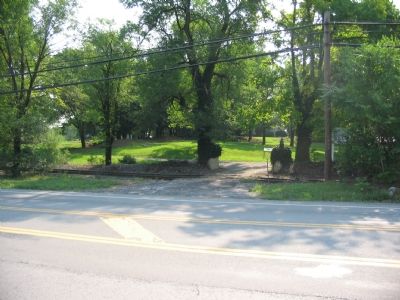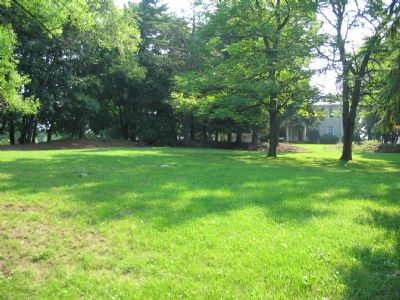Near Winchester in Frederick County, Virginia — The American South (Mid-Atlantic)
Fort Collier
“I never saw such a sight”
Confederate troops constructed Fort Collier in 1861 after the evacuation of Harpers Ferry. The earthworks, which surrounded the Benjamin Stine house here, commanded the approach to Winchester on the Martinsburg and Winchester Turnpike. The fort saw little action until late in the afternoon on September 19, 1864, when, during the Third Battle of Winchester, it became a focal point of the engagement. Here a great Union cavalry charge led by Gen. Wesley Merritt turned the battle against Gen. Jubal A. Early’s outnumbered Confederates. The charge was earthshaking and memorable. A Confederate infantryman who survived the attack later wrote, “I never saw such a sight in my life as that of the tremendous force, the flying banners, sparkling bayonets and flashing sabers moving from the north and east upon the left flank and rear of our army.”
The Stine house was destroyed in the battle. The present day dwelling, still largely surrounded by the Confederate earthworks, was built in 1867.
Erected by Civil War Trails.
Topics and series. This historical marker is listed in this topic list: War, US Civil. In addition, it is included in the Virginia Civil War Trails series list. A significant historical month for this entry is September 1743.
Location. 39° 12.095′ N, 78° 9.272′ W. Marker is near Winchester, Virginia, in Frederick County. Marker is at the intersection of Martinsburg Pike (U.S. 11) and Brooke Road (Route 1322), on the right when traveling north on Martinsburg Pike. At the west side entrance to Fort Collier Civil War Center. Touch for map. Marker is at or near this postal address: 922 Martinsburg Pike, Winchester VA 22601, United States of America. Touch for directions.
Other nearby markers. At least 8 other markers are within walking distance of this marker. A different marker also named Fort Collier (within shouting distance of this marker); George Washington in Winchester (within shouting distance of this marker); Lt. Collier’s Earthworks (within shouting distance of this marker); a different marker also named Fort Collier (about 300 feet away, measured in a direct line); 2nd Battle of Winchester / 3rd Battle of Winchester (about 400 feet away); 2nd Battle of Winchester (about 400 feet away); 3rd Battle of Winchester (about 400 feet away); The Cavalry Charge at Fort Collier (about 400 feet away). Touch for a list and map of all markers in Winchester.
More about this marker. The center of the marker shows, “Thulstrup’s dramatic canvas depicted the decisive blow of the Third Battle of Winchester, September 19, 1864. The cavalry charge struck Fort Collier late that afternoon and unhinged the Confederate line of defense that extended from here, south to the Berryville Turnpike.”
A portrait of
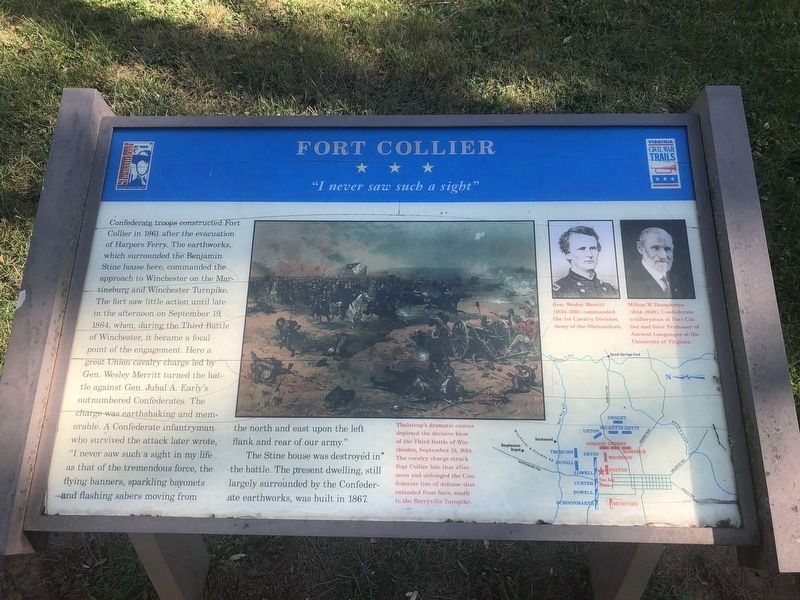
Photographed By Devry Becker Jones (CC0), November 6, 2020
2. Fort Collier Marker
The marker has significantly weathered.
A second portrait is of “Milton W. Humphreys (1844–1928), Confederate artilleryman at Fort Collier and later Professor of Ancient Languages at the University of Virginia.”
A map details the tactical situation at the later stages of the battle.
Regarding Fort Collier. Four additional interpretive markers at the Fort Collier site detail the history and layout of the fort.
Related markers. Click here for a list of markers that are related to this marker. To better understand the relationship, study each marker in the order shown.
Also see . . .
1. Fort Collier Civil War Center. Website homepage (Submitted on September 13, 2007, by Craig Swain of Leesburg, Virginia.)
2. Opequon or Third Winchester. Battle Summary from the National Park Service. The action at Fort Collier is covered under phase 9 of the battle. (Submitted on September 13, 2007, by Craig Swain of Leesburg, Virginia.)
Credits. This page was last revised on January 7, 2023. It was originally submitted on September 13, 2007, by Craig Swain of Leesburg, Virginia. This page has been viewed 1,908 times since then and 25 times this year. Photos: 1. submitted on September 13, 2007, by Craig Swain of Leesburg, Virginia. 2, 3. submitted on November 7, 2020, by Devry Becker Jones of Washington, District of Columbia. 4, 5. submitted on September 13, 2007, by Craig Swain of Leesburg, Virginia. • J. J. Prats was the editor who published this page.
